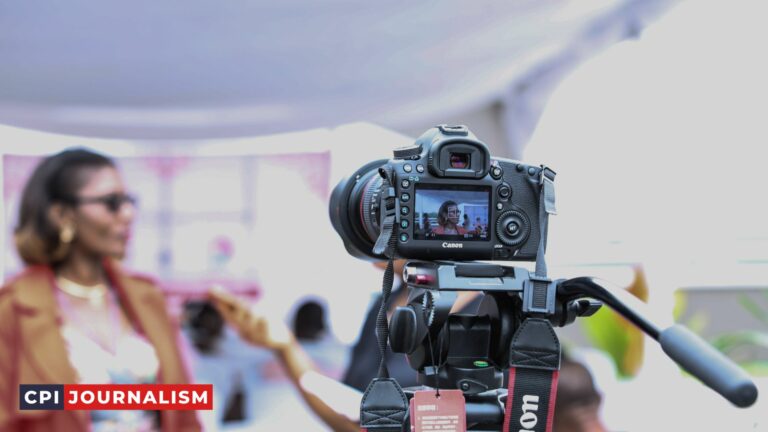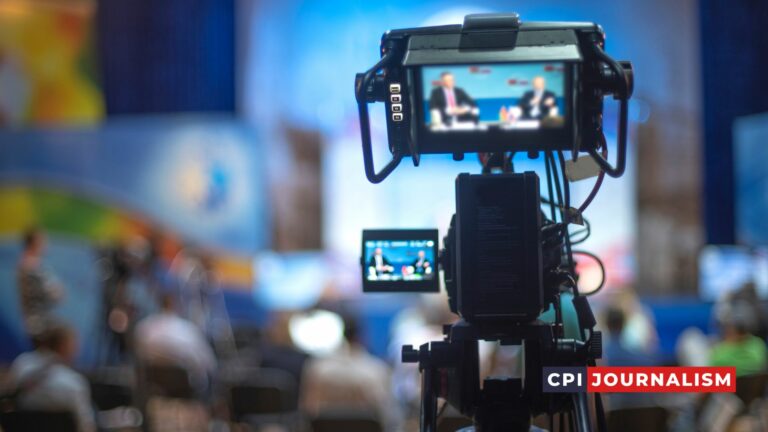How Can Broadcast Journalists Ensure That Their Reporting Is Fair And Balanced, And That All Relevant Perspectives Are Represented In A Story?
As an experienced journalist, I am here to share my wisdom and expertise with upcoming journalists on how to ensure their reporting is fair and balanced and that all relevant perspectives are represented in a story.
Reporting in a fair and balanced manner is a major responsibility of a journalist which requires a great deal of dedication and effort.
It is important to understand the various perspectives that are present in the story and to present them in a balanced and unbiased way.
In this article, I will discuss the various ways broadcast journalists can ensure fairness, balance and accuracy in their reporting.
A. Definition Of Fair And Balanced Reporting
Fair and balanced reporting is a journalistic principle used to ensure that all relevant perspectives are represented in a story.
It requires that journalists present unbiased facts, and ensure that all sides of an issue are given equal weight and consideration.
It also emphasizes the importance of providing a wide range of perspectives in order to give the reader a more complete picture of the story.
Fair and balanced reporting does not mean that the journalist has to take a neutral position on the issue. Rather, it means that the journalist must present all the facts and present a full range of opinions, even if those opinions are not in agreement with his or her own opinion.
It also requires that the journalist be open to criticism and feedback from diverse sources and to carefully consider how those sources may affect the narrative.
Fair and balanced reporting is essential for ensuring that all voices are heard in a story. It is a cornerstone of journalistic integrity and helps to ensure that all points of view are presented in a fair and unbiased manner.
B. Overview of the Challenges of Fair and Balanced Reporting
As a broadcast journalist, it is essential to ensure that all relevant perspectives are represented in a story, and that reporting is fair and balanced. However, this is no easy task. There are a variety of challenges that come with achieving this goal.
The first challenge is to ensure that all relevant perspectives are included. It is not always possible to include every single perspective, but it is important to be aware of the different points of view on the issue.
In addition, it is important to be aware of any potential biases, and to strive to remain as impartial and unbiased as possible.
The second challenge is to ensure that all relevant perspectives are presented in a balanced way. This means that all sides of the story should be presented in an equal manner, and that no perspective is given more credence than any other. This is often easier said than done, especially when covering a controversial issue.
The third challenge is to ensure that the reporting is accurate and factual. It is important to fact-check all sources and to ensure that any information presented is accurate and up-to-date.
This is especially true when covering breaking news stories, as it is important to ensure that all relevant facts are presented in a timely manner.
Overall, ensuring that broadcast journalism is fair and balanced is a difficult task, and one that requires a great deal of skill and experience.
However, by being aware of these challenges and striving to remain as impartial and unbiased as possible, it is possible to provide viewers with accurate and informative reporting.
The Role Of Broadcast Journalists In Ensuring Fair And Balanced Reporting
As broadcast journalists, one of our most important responsibilities is to ensure that our reporting is fair and balanced, and that all relevant perspectives are presented in our stories.
This is critical for maintaining the credibility and integrity of our profession and providing an accurate representation of events and issues.
Broadcast journalists have a duty to be impartial and objective in their reporting. This means that they should not take sides or express an opinion on the topics they are covering. Instead, they should strive to provide a balanced account of the facts and allow viewers to form their own opinion.
In order to ensure fair and balanced reporting, broadcast journalists should be aware of the potential for bias in their reporting. This includes avoiding the use of inflammatory language, sensationalism, and oversimplification of complex issues.
Journalists should also strive to include multiple perspectives, especially those of minority groups, in their stories.
In addition, broadcast journalists should be diligent in their fact-checking and research. They should verify the accuracy of all claims and quotes, and take the time to research the historical and cultural context of stories. This helps to ensure that viewers are presented with accurate, unbiased reporting.
Finally, broadcast journalists should strive to be transparent in their reporting. They should disclose any conflicts of interests or connections to the individuals or organizations they are covering. This helps to maintain impartiality and promote trust in their reporting.
By following these guidelines, broadcast journalists can ensure that their reporting is fair and balanced, and that all relevant perspectives are represented in stories. In doing so, they can uphold the standards of ethical reporting and maintain the credibility and integrity of their profession.
A. Understanding The Story
As a broadcast journalist, it is essential to ensure that your reporting is fair and balanced, and all relevant perspectives are represented in a story. In order to do this, one must begin by understanding the story they are reporting on.
This means having an extensive knowledge and understanding of the topic, the people involved, and the potential implications of the story.
First, it is essential to research the topic thoroughly. This includes reading relevant articles, studies, and reports on the subject. Additionally, be sure to look for information from reliable sources, such as accredited organizations and experts in the field.
This research should also include speaking to people involved in the story, such as those directly impacted and experts on the subject. This will provide valuable insight into the story, as well as give you a more complete picture of the situation.
Second, it is important to consider all relevant perspectives when reporting the story. This includes understanding the different angles and the implications for each side. It is important to consider all the facts, as well as the potential consequences of the story.
Additionally, understanding the biases associated with each perspective can help you ensure that all perspectives are represented accurately and fairly.
Finally, it is important to consider the potential impact of the story. This includes understanding the potential implications of the story, as well as the potential consequences it may have on the people and organizations involved.
It is also important to consider how the story may be interpreted by viewers and readers, and how it may affect public opinion.
By understanding the story and all of its components, broadcast journalists can ensure that their reporting is accurate, fair, and balanced. Additionally, by considering all relevant perspectives and potential implications, journalists can ensure that all perspectives are represented accurately in the story.
1. Researching The Story
As an experienced journalist, I know all too well the importance of researching a story thoroughly and getting all the facts right before reporting.
It is vital that broadcast journalists ensure that they have done their research and gathered all the relevant information before they begin to report on a story. It is essential that they get all the facts right and that they are able to present a fair and balanced story.
The first step in researching a story is to identify the key stakeholders and potential sources. This could include primary sources such as interviews with key figures, as well as secondary sources such as industry reports or academic studies.
It is also important to consider the perspectives of any other parties that may be affected by the reported story.
The next step is to determine the facts and the truth of the story. This can be done through verification of facts from sources, as well as through the analysis of data. Data can provide valuable insights into the story, and can be used to support claims and to provide evidence for particular points.
The final step is to ensure that all relevant perspectives are represented in the story. It is important to hear from a variety of sources and to get a range of perspectives on the story. This ensures that the story is as balanced and unbiased as possible.
In conclusion, it is essential that broadcast journalists take the time to research their stories thoroughly and ensure that they present a fair and balanced story.
This can be done by identifying the key stakeholders and potential sources, determining the facts and truth of the story, and ensuring that all relevant perspectives are represented in the story.
2. Identifying All Relevant Perspectives
As experienced journalists, we understand that it is our job to ensure that all relevant perspectives are considered when reporting a story. We must take the time to identify the full range of perspectives that could be relevant to the story and reach out to all of the appropriate sources.
First and foremost, we should examine the facts of the story and determine which perspectives are the most relevant to the story.
It is important to avoid making assumptions about what perspectives should be included and instead focus on the facts of the story and who may be impacted by the story. We should also take into account any potential conflicts of interest or biases that may be present.
In addition, we should consider the potential impact of the story on different stakeholders. We should make an effort to reach out to all affected parties and seek to include their perspectives in the story.
This may include interviewing people directly affected by the story, members of the local community, or representatives from organizations that could be impacted by the story.
Finally, we should strive to bring in a variety of perspectives from different backgrounds and viewpoints. This includes seeking out experts, academics, and other professionals who can provide insights into the story from different angles.
It is also important to consider the opinions of individuals who may not be directly involved in the topic, as they may provide valuable insight into the story.
By taking the time to identify all relevant perspectives, we can ensure that our reporting is fair and balanced, and that all sides of the story are represented. This will help to ensure that our reporting is factual, unbiased, and comprehensive.
3. Considering Unconventional Perspectives
As a broadcast journalist, it is important to consider perspectives which may not be conventional or popular. It may be difficult to cover stories which challenge existing beliefs or challenge the status quo, but it is essential to ensure that all relevant perspectives are included in a story.
One way to do this is to look for individuals who may have a unique or unconventional viewpoint, and to include them in the story. This may include those who are not traditionally considered to be “experts”, but who still have valuable insights to offer.
It is also important to be aware of potential biases which could influence the story. For example, many news outlets report stories which favour one perspective over another, or which only include perspectives which are popular or widely accepted.
It is important to be aware of these biases and to strive to represent all relevant perspectives in a story.
Finally, it is important to ensure that the reporting is accurate and factual. While it is important to consider all perspectives, it is also important to fact-check the information provided by sources. This will ensure that the story is fair and balanced, and that all relevant perspectives are represented accurately and without bias.
B. Interviewing Sources
As a broadcast journalist, it’s important to ensure that your reporting is fair and balanced, and that all relevant perspectives are represented in a story. One of the most effective ways to ensure this is through the interview process.
Interviewing sources is essential in order to get different perspectives on a story, and it’s important to ensure that all sides are represented in the reporting.
When interviewing sources, it’s important to prepare in advance. Research the topic and the sources you’ll be interviewing. This will help you ask informed questions and get the answers you need for a balanced report.
It’s also important to make sure that you’re not biased in your questions. Ask questions from different angles, and avoid leading questions that could influence the answers.
It’s also important to be mindful of the diversity of the sources you’re interviewing. Make sure you are representing a variety of ages, genders, ethnicities, and backgrounds. This will ensure that different perspectives are being included in the reporting.
Finally, it’s important to be aware of the potential for bias in a source’s answers. Ask follow-up questions to ensure that the answers are being represented accurately, and that all sides of the story are being explored. This will help ensure that your reporting is fair and balanced.
1. Preparing For Interviews
As a broadcast journalist, getting the facts straight and presenting a fair and balanced story is paramount. To ensure that all relevant perspectives are represented in a story, one must take the time to properly prepare for interviews.

Here are some tips to help ensure that interviews are conducted with fairness and accuracy:
1. Research the Topic: Before conducting an interview, it is important to spend time researching the topic. This will help you understand the different perspectives and make sure all of them are represented in the story.
2. Be Prepared: Before the interview, make sure to have a list of questions prepared and practice them in advance. This will help the interview run smoothly and allow you to cover all the important points.
3. Listen Carefully: During the interview, make sure to listen carefully to the answers and take notes so you don’t miss any important points. This will help you get the most out of the interview and ensure that all perspectives are represented accurately.
4. Follow Up: After the interview, follow up with any additional questions you may have. This will help ensure that all relevant points are covered in the story.
By taking the time to properly prepare for interviews and following the tips outlined above, broadcast journalists can ensure that their reporting is fair and balanced, and that all relevant perspectives are represented in a story.
2. Asking Open-Ended Questions
Asking open-ended questions is a key component of broadcasting fair and balanced reporting. Open-ended questions allow the interviewee to provide their own opinions and perspectives, which can help create a more balanced story.
By asking open-ended questions, journalists can ensure that all relevant perspectives are represented in the story.
When asking open-ended questions, it is important to avoid leading questions. Leading questions are questions that suggest a particular answer, and can lead the interviewee to provide biased or predetermined answers.
Journalists should also avoid asking questions that are too specific, as this can limit the interviewee’s ability to provide their own opinion.
When asking open-ended questions, it is also important to be aware of the cultural differences that may affect the interviewee’s responses. Different cultures may have different ways of responding to questions, and it is important to take this into consideration when asking questions.
Asking open-ended questions is an important part of creating a fair and balanced report, as it allows journalists to ensure that all relevant perspectives are represented in the story.
By avoiding leading questions and being aware of cultural differences, journalists can ensure that the information they receive is unbiased and accurate.
3. Listening to Sources
In order to ensure that their reporting is fair and balanced, broadcast journalists need to be open to listening to all sources. This means listening to, and considering, all perspectives, regardless of whether they align with the journalist’s own beliefs or not.
It’s also important to ensure that sources are given an opportunity to provide their perspectives without interruption or bias.
It’s also important to practice active listening; this means listening intently and trying to understand the source’s perspectives, rather than just listening to respond. This makes it easier to ask meaningful questions and gain valuable insights.
Additionally, broadcast journalists should take into account the potential bias of sources. It’s important to recognize when a source is trying to influence the story, and to consider the validity of the information they provide.
Finally, journalists should remember to remain objective and impartial throughout the reporting process. They should strive to remain free of bias and to provide all relevant perspectives in their stories. This will help to ensure that their reporting is truly fair and balanced.
4. Seeking Out Diverse Sources
As a broadcast journalist, it is important to seek out a variety of sources when reporting on a story. When researching a story, make sure to include multiple voices, opinions and perspectives.
This is especially important when reporting on a controversial or complex issue, as it allows a more comprehensive look at the issue and helps to ensure that all relevant perspectives are represented.
When seeking out diverse sources, you should consider the geographic, cultural and political backgrounds of the sources you are interviewing.
Additionally, consider interviewing people with different levels of expertise or expertise in different areas, such as experts in the field or academics, as well as everyday people.
When reaching out to potential sources, make sure to ask questions that are relevant to the issue you are reporting on, and explain why you are interested in speaking with them. It is also important to be open to sources challenging your own preconceived notions on the topic.
Finally, don’t forget to reach out to people who may not typically be heard from in the media, such as those from marginalized or minority communities. This can help to ensure that all relevant perspectives are represented in your reporting.
C. Writing The Story
As a broadcast journalist, one of the most important aspects of your job is to ensure that your story is fair and balanced and that all relevant perspectives are represented. Writing a story that meets these criteria can be a challenging task, but with a few tips and strategies it can be done effectively.
The first step to writing a fair and balanced story is to do your research. Researching both sides of the story will provide you with the information you need to craft a balanced article. You should speak to sources on both sides of the issue and make sure to include their perspectives in your story.

When writing your story, it is important to keep the language neutral and unbiased. Avoid using language that could be interpreted as favoring one side over the other. Also, make sure to use accurate and up-to-date facts and figures.
Finally, it is important to provide context and explanation. Explain why the issue is important and why both sides are presenting their arguments. This will help to provide a fuller picture of the situation and give the reader a better understanding of the issue.
By following these tips and strategies, you can ensure that your reporting is fair and balanced and that all relevant perspectives are represented in your story.
1. Crafting a Balanced Narrative
As a broadcast journalist, one of the most important things you can do to ensure your reporting is fair and balanced is to craft a balanced narrative. This means presenting a story in a way that accurately reflects all relevant perspectives and allows viewers to make their own informed decision.
The first step in crafting a balanced narrative is to research the story thoroughly. Gather information from multiple sources and assess the credibility of each. Make sure to include perspectives from all stakeholders, including those who may have a vested interest in the story.
Once you have collected enough information, it is time to begin constructing the narrative. Make sure to present the facts objectively, without bias or personal opinion. Avoid sensationalism and be sure to give both sides of the argument their due diligence.
When it comes to structuring the narrative, it is important to make sure it is logical and comprehensive. Start with an introduction that sets the tone for the story and frames the issue for the audience. Then, provide the background and context for the story.
Next, include the facts and arguments from both sides of the issue. Be sure to explain any jargon or technical terms in simple language, so that the audience can understand the story. Finally, provide a conclusion and offer your own personal opinion, if you have one.
By crafting a balanced narrative, broadcast journalists can ensure their reporting is fair and balanced and that all relevant perspectives are represented in a story. This will not only help viewers make an informed decision, but it will also help build trust and credibility in the media.
2. Avoiding Bias
As a broadcast journalist, it is essential to ensure that reporting is fair and balanced, and all relevant perspectives are represented in a story.
This can be a challenging task, as bias can creep in even when we are not aware of it. To ensure that our reporting is unbiased, there are a few key steps that can be taken.
First, it is important to do thorough research when gathering information for the story. This includes seeking out multiple reliable sources and verifying the accuracy of the information.
Additionally, it is important to make sure that different perspectives are represented in the story, and that the sources are from a variety of backgrounds.
Second, it is important to be mindful of the language used when reporting. Words can be interpreted in different ways and can carry different connotations. It is important to be aware of the impact that language can have and to make sure that the language used is balanced and neutral.
Third, it is important to be aware of our own biases and to check ourselves before reporting. We should take the time to examine our own personal opinions and beliefs, and to make sure that they are not influencing our reporting.
Additionally, it is important to be aware of any potential conflicts of interest that may exist and to take steps to avoid any potential bias.
Finally, it is important to always be open to feedback and constructive criticism. We should not be afraid to ask for feedback from our peers and to consider any potential biases that may be present. By being open to feedback and criticism, we can ensure that our reporting is fair and balanced.
By taking these steps, we can ensure that our reporting is unbiased and that all relevant perspectives are represented. This is essential for creating fair and balanced reporting that is accurate and credible.
3. Double-Checking Facts
As a broadcast journalist, it is essential to double-check the facts before presenting them in a story. This is key to ensuring that all relevant perspectives are represented fairly and accurately.
The process of double-checking facts should include a thorough review of any research material and sources used in the development of the story. This includes primary and secondary sources, such as books, journals, websites, interviews, and so on.
Moreover, journalists should cross-check facts and figures with other sources to verify their accuracy. This should include checking with other journalists and media outlets, as well as consulting with experts in the field.
It is also important to be aware of any potential biases that may be present in the sources used, and to consider the reliability of the information being presented. Additionally, journalists should be mindful of any potential conflicts of interest that may exist in the sources used.
Finally, it is essential to ensure that all facts, figures, and perspectives presented in the story are properly attributed to the appropriate sources. This helps to maintain the integrity of the story and to ensure that all perspectives are represented accurately.
III. Conclusion
In conclusion, broadcast journalists can ensure the fairness, accuracy, and balance of their reporting by taking a few key steps. First, they should strive to research their stories thoroughly, gathering all relevant perspectives and evidence.
Second, they should consider seeking out diverse sources to give voice to a variety of perspectives. Third, they should strive to put aside their own beliefs and biases, and report objectively and neutrally.
Finally, they should be aware of their potential for bias in the editing process and take steps to avoid it. By following these steps, broadcast journalists can ensure that their reporting is fair and balanced, and that all relevant perspectives are represented in a story.
A. Summary Of The Role Of Broadcast Journalists In Ensuring Fair And Balanced Reporting
Broadcast journalists play a critical role in ensuring fair and balanced reporting. As news professionals, it is their responsibility to ensure that all relevant perspectives are represented in their reporting.
This means actively seeking out sources who can provide insight into all sides of the story—not just the ones who are most convenient or who agree with the journalist’s own opinion.
Broadcast journalists should strive to remain as impartial as possible in their reporting. This means avoiding the temptation to sensationalize or spin the story in one direction or another. It also means avoiding bias in the selection of sources, ensuring that all voices are heard and represented.
Finally, broadcast journalists should be mindful of their own biases and strive to eliminate them from their reporting. They should also never shy away from asking tough questions and challenging assumptions. This will help ensure that the reporting is fair, balanced, and thorough.
B. Final Thoughts on Fair and Balanced Reporting
Fair and balanced reporting is an essential part of broadcast journalism, and one that should not be taken lightly. As experienced journalists, we understand the importance of always striving to provide an accurate and unbiased representation of the facts in our reporting.
It is essential that broadcast journalists strive to represent all relevant perspectives in their reporting and remain aware of their own potential biases. This can be done by doing thorough research, seeking out a variety of sources, and always double-checking facts before reporting them.
In addition, it is important that journalists be mindful of the way they present information and ensure that the narrative they are telling is as balanced and unbiased as possible. This can be done by taking extra care to avoid language that is overly sensational or biased in any way.
Finally, it is important for journalists to be aware that all reporting carries a certain level of responsibility, and that they must always strive to ensure that their reporting is fair and balanced.
As experienced journalists, we understand the importance of always striving to provide an accurate and unbiased representation of the facts in our reporting.







